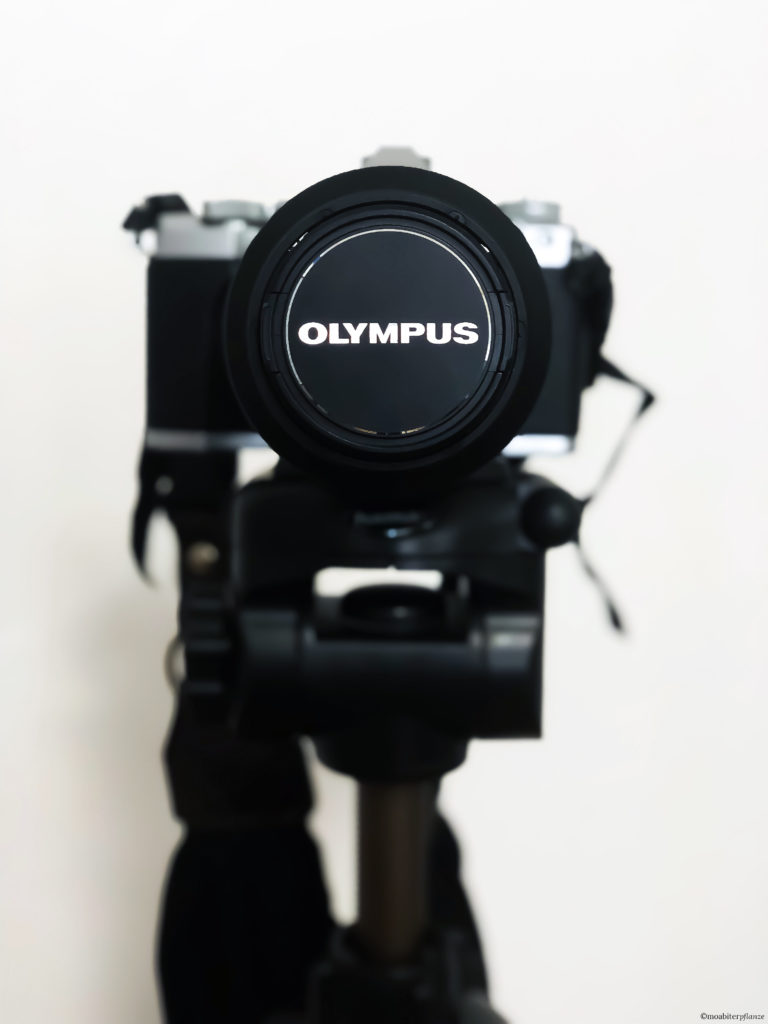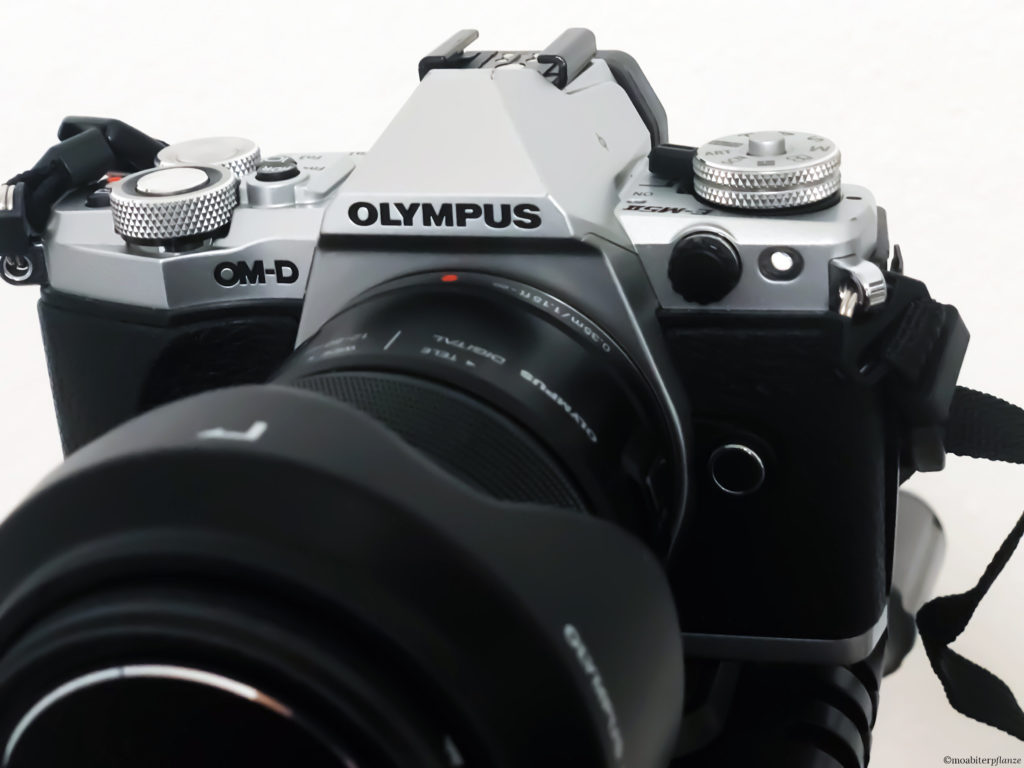Photography
Why a MFT camera?
Due to the uncertain legal situation in Germany, I have to label this article as advertising, even if I have not received any money for it.
As a diligent reader of moabiterpflanze you might already have noticed that I – except for this article – all photos with an Olympus camera. More precisely: with an Olympus OM-D E-M5 Mark II. I lovingly call it Zeus.
I took over Zeus from my mother several years ago, who has a high opinion of the Olympus brand. Personally, I had previously only taken photos with my cellphone and no idea. I was glad to finally have a “real” camera.
The ridicule
As I gained my first photo experiences, I noticed that other photographers with more experience looked at my camera with pitiful if not condescending eyes. Later I learned why, but also how – yes, I am now leaning far out the window – they were snooty.
MFT and full-frame
The reason for their arrogance was that the Olympus cameras have an MFT – a Micro Four Thirds sensor. In addition to Olympus, some Panasonic Lumix cameras have an MFT sensor, because the two companies have significantly developed it. However, most photographers use full-frame cameras with larger sensors because they believe that a larger sensor makes a sharper image. That’s true, but only in half.
Why are the critics of the MFT system half right?
If you want to print your photos, then you’ll notice a difference between a MFT and a full-frame photo from a certain scale. The larger you want to print the image, the blurrier a MFT photo gets. It’s similar to the analog cameras. If the film was bigger, you could enlarge the photo to a larger size than a smaller film. So it is with the sensors. But most full-frame cameras take small format photos. The photos of medium-format cameras, the Phase One cameras, are really sharp even in incredibly large print sizes. There the sensor is even bigger. If you would like to have an impression of this 48,000€ expensive camera, here I have video of Benjamin Jaworskyj for you. These cameras are real tanks of photography, however big and seemingly heavy they are.
Image quality of MFT photography
It is often criticized that the depth of field is poor in MFT cameras. That is nonsense. The depth of field depends on a lot (lens, skills of the photographer …), but not on the sensor size. Joe Edelman can explain that better than me:
Let’s be realistic: will we ever put our photos on a billboard? Rather not. For most likely photo prints, an MFT sensor is more than sufficient. I have some MFT photos printed on Din A2 and A1 format. The result has been great and otherwise my photos remain digital.
To give you a better idea of picture quality, I have a video from The School of Photography for you:
As for the digital quality: Look at my galleries and decide for yourself what you think of them. At Oldtimer race on the beach, I have used a vintage effect with Photoshop, at Perspectives Studio183 I have flattened the colors and shadows, at Berlin Lights 2019 I have increased the contrast and The beauty of the ocean, I have increased the dynamics, enhancing the blue, increased luminance and reduced luminance details. I just like to play with the image editing program. Below I have another example for you (photos taken with Olympus OM-D E-M5 Mark II and the lens Olympus M.Zuiko Digital 45mm 1: 1.2):
Technical advantages of the body
MFT cameras are significantly smaller and lighter than full-frame cameras. It is about 1/3 smaller and lighter than an average digital SLR camera. A real advantage if you have to be mobile or take pictures of the long day. During Fashion Week it can happen that I hold the camera for several hours at a time. The body of the Olympus OM-D E-M5 Mark II weighs 469 g with battery and SD card (lens not included). It really makes a big difference to a DSLR camera with the weight of 849 g without battery, SD card and lens.
Technical advantages lenses
Like the body, the lenses are significantly smaller and lighter. This can be really tricky for newcomers to the MFT system, because the focal lengths of MFT lenses differ significantly from the focal lengths of full-frame lenses. An example: a good portrait lens is actually a 50 mm lens (with a full-frame lens). This is true for a MFT lens, but even if the lens is 50 mm, you can see it as 100 mm. It has a “light” tele effect. You really have to go very far away to get more out of your subject. As “formula”: focal length full-frame = x; Focal length-MFT = x*2. The ideal portrait lens for a MFT camera would be a 25 mm lens.
Here’s a video from Red35 Photography comparing the size of two similar lenses:
Additional advantages
I do not know how much you travel, but I’ve learned in some conversations with professional and travel photographers that this small and mobile camera system has other – sometimes unexpected – advantages. Of course it is good that the luggage is lighter and smaller, but that is clearly not the only benefit. Well, there are some countries, because you are not necessarily thrilled when you take a lot of pictures and this rather small system has the advantage that you will not be arrested so quickly. That’s not a joke. The photographer Jean Molitor, who currently has an exhibition in the Willy-Brandt-Haus on the subject of Bauhaus architecture, once had the pleasure of being considered a spy, because he photographed a house again and again with his large camera system. It is probably true that some of these countries are on my photo travel wish list, such as Morocco …
Conclusion
The end of the MFT system has been prophesied by critics since the 1980s. There is currently a wave of “MFT Apocalypse Prophecies”, but I think it is nonsense. I find the quality of my photos absolutely good and my camera is splash-proof and dust resistant (I can even shoot with a Pro lens even in heavy rain) and I can work with it at outdoor temperatures of -20°C to 60°C.
There are other advantages of my Zeus, but I will write them in another article!
So if you are looking for a high quality camera system that is still light and small, then an MFT camera system could indeed be something for you. I think that especially ambitious amateur photographers, mobile professional photographers and bloggers with a MFT camera are well advised.
Further advantages of the MFT system can be found in the YouTube channel of FF-Fotoschule Frank Fischer.
Would I personally ever buy a full-format camera?
Honestly, I do not know. Olympus has just launched a new camera on the market, which I like very much, but I absolutely can not afford (just so incidentally I want to say here that I do not receive a dime or anything for this article). So far, I’ve been photographing with an excellent Olympus camera and the only full-frame camera I’ve ever been attracted to is a Leica S system camera, which alone costs more than 18,000€, but it’s actually a medium-format camera. Accordingly, my answer is probably rather no.




